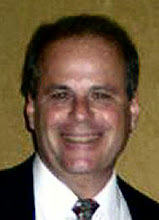For those of you who are interested in learning a bit about the origin of the Yiddish language, at least as explained in a 1904 edition of Minnesota's St. Paul Globe, please visit www.museumoffamilyhistory.com/hyl-origins-globe.htm.
The article states in part:
"As the municipal campaign progresses and political "literature" becomes more abundant, all West Side residents, all visitors at the court house will encounter handbills printed in strange characters. Most Americans will fail to recognize the language of the bills. Some disappointed readers will call the printing Greek; others will say it's merely Syrian or Arabic; for St. Paul has its representatives from Athens, Beirut and Damascus.
The better informed will make a closer guess and call the curious language Hebrew. And, finally, one man in ten will know the truth. He will say 'It's Yiddish.'
Ask him, however, what is Yiddish? He'll probably tell you it is modern Hebrew, or that it is simply Russian or Polish printed in Hebrew characters. He knows, at any rate, that Yiddish is the language of several thousand St. Paulites; that it is spoken constantly among themselves by numerous Russian, Polish and Roumanian Jews in this city; that it flourishes especially among the many Jews of West St. Paul.
Yiddish, indeed, is the language of all the multitude of Russian, Polish and Roumanian Jews that have immigrated to America in recent years. Not a few of these immigrants know other languages, including the language of the countries where they've lived. But Yiddish is the popular medium, the language of the home, the shop, the synagogue, Yiddish newspapers are published in several American cities. In Greater New York Yiddish is the language of influential journals and of more pretentious literature. A writer of Yiddish novels who lives on Gotham's East side, was lately described as the most prolific of modern romancers.
Yet this favorite tongue or Russian Hebrews, of Polish Hebrews, of Roumanian Hebrews, is not Hebrew; neither is it Russian nor Polish nor Roumanian. Chiefly it is German, old German, medieval German, popular German, German not merely "broken," but shattered, torn, pulverized--a veritable linguistic mincemeat."
Be sure to visit the Museum's Yiddish World at www.museumoffamilyhistory.com/y.htm when you have the time. It is a "virtual potpourri of Yiddish culture."
The Museum will also feature more about all things Yiddish in the future, e.g. Yiddish theatre, language and literature.
Subscribe to:
Post Comments (Atom)




No comments:
Post a Comment